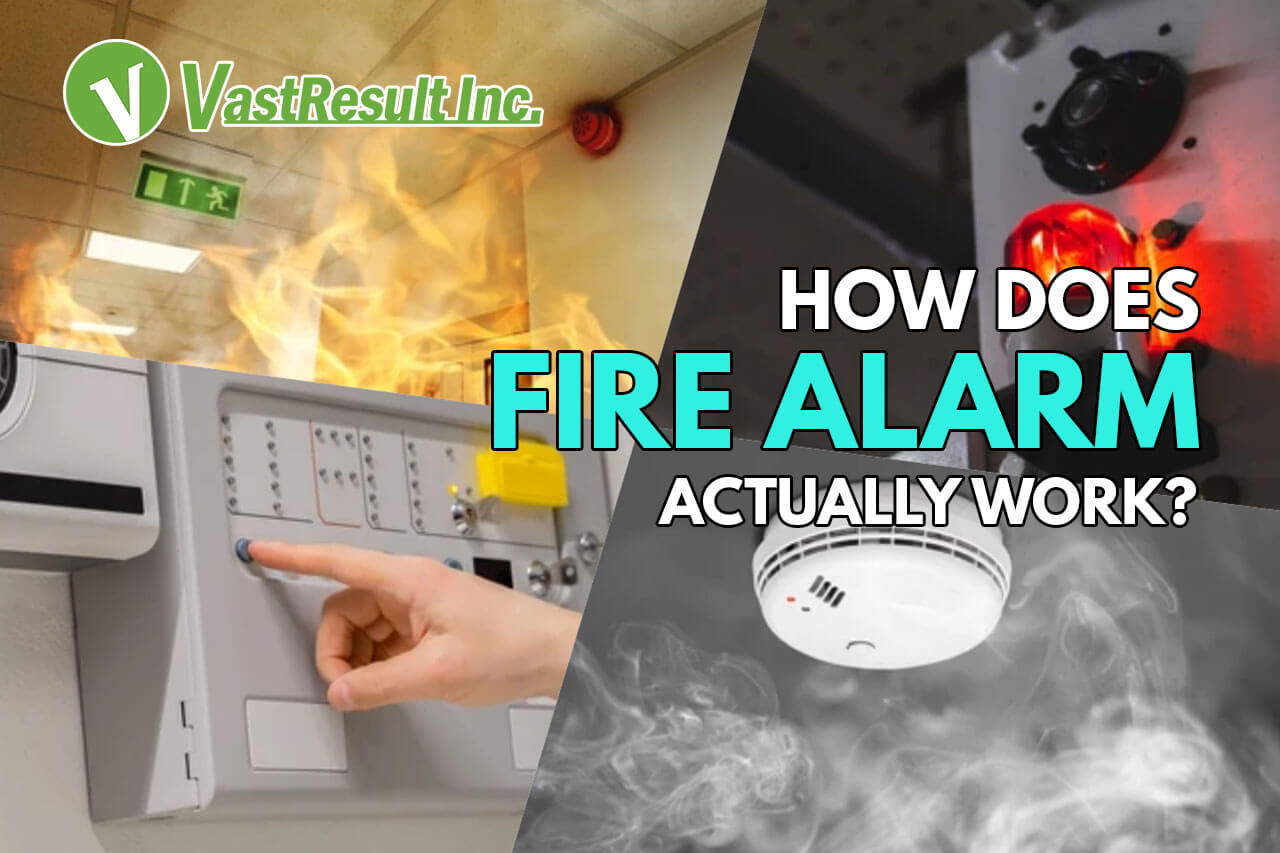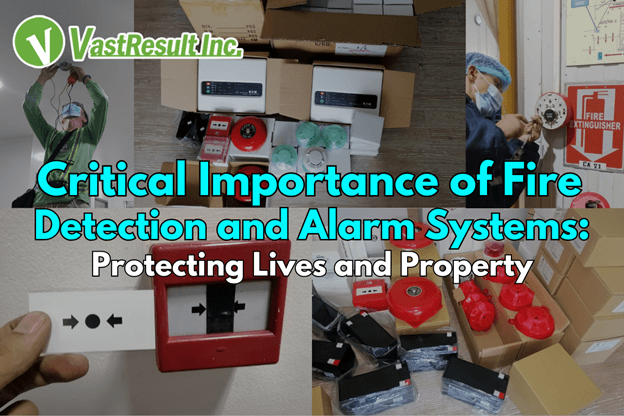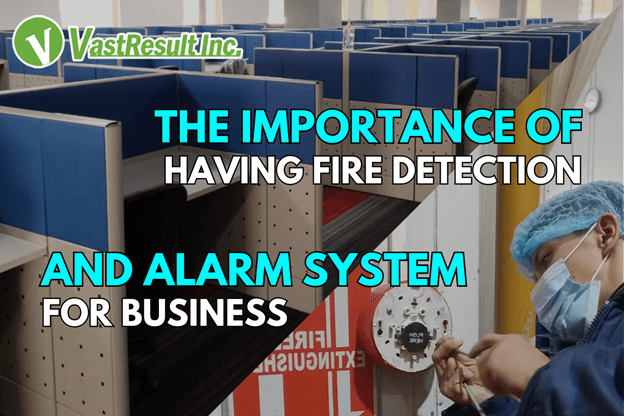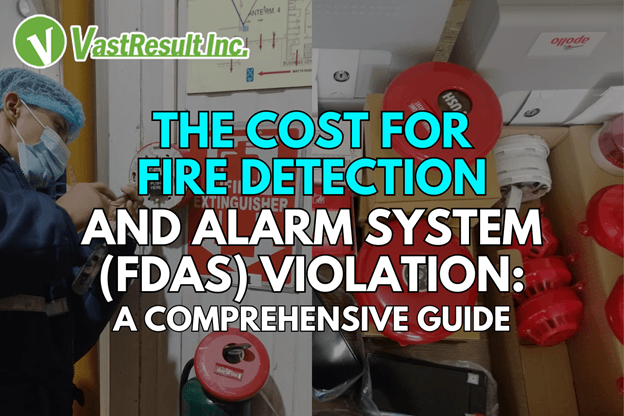
Fire Alarm System: Fire Safety Do’s and Don’ts
May 31, 2023
Structured Cabling Essentials: Building a Reliable Network Backbone for your Business
April 17, 2024What really occurs when a fire alarm is activated? Who determines if a situation is a true emergency or a false alarm? In a huge building complex, how are controls for elevators and other fire safety equipment implemented? As soon as there is a fire risk, a fire alarm system controls intricate activities.
What does a fire alarm system do?
The fire alarm system is used to protect against fires in advance and is a member of the family of “danger alarm systems.” For the protection and control of fires, a fire detection system includes a number of parts and components. These comprise sensors (such as smoke and fire detectors) and automated extinguishing tools (such as sprinkler systems and/or smoke detection systems with air sampling). The Fire Alarm Center is the brain of a fire alarm system (BMZ).
Extensions to a fire alarm system might include escape path lights, fire service key depots, reception stations, or roller shutter controls.
Activation of a fire alarm
In the case of an emergency or fire, an alarm is set off. A phone call or mobile phone network is used to promptly notify the appropriate fire department. Other responsible parties are frequently informed of the fire alarm system as part of this procedure through voice calls or SMS.
What’s the process of a fire alarm system?
Different fire detector characteristics are used by the fire alarm system to decide if a fire event is present and how much it requires a response. Among other things, the following parameters can be utilized as a reference source:
- the main source of smoke creation
- a room’s temperature
- the emergence of flames
- Installed fire extinguishing systems’ response
A fire alarm center: what is it?
The most crucial component of a fire alarm system is the fire alarm center (BMZ). All signals and data received by the building’s various monitoring and fire detection systems are gathered by the fire alarm system. The fire alarm system analyzes and assesses the information that has been gathered. The evaluation’s findings form the foundation for subsequently controlling the appropriate actions.
The central control unit and a fire service control panel are frequently seen in the fire alarm center. The control panel and other components are kept in a fire department information center if these components are placed independently.
The fire alarm center‘s actions
The following categories can be used to group the fundamental responses and actions of a fire alarm center: reporting, alerting, controlling, and informing
Reporting
Fire detection, shoulder fires, and obtrusive heat developments are the key reports. However, a fire alarm system’s reporting function also includes the production of visible and invisible smoke aerosols.
Alerting
and Notifying the appropriate fire station and any potential internal security forces is one of the most crucial measures. The building’s occupants are also alerted via the fire alarm system
Controlling
Various fire protection components are controlled by the fire alarm system. These include fire doors and flaps, types of machinery, electrical equipment, extinguishing systems, and smoke and heat extractors.
Informing
The fire alarm center offers a variety of controls for the examination of the analyzed data. Output via a control panel, a printer, or via an established map table are examples of common information variations.
If you want the most skilled and reputable fire alarm system supplier and fire alarm system contractor, who should you contact? And you want to know more about Fire Alarm Systems?
What are the benefits of having VastResult install your fire alarm system?
In order to ensure that everyone who lives, works, and visits a building’s premises is protected from unplanned fire incidents, VastResult Inc., a fire alarm contractor, works with its clients to achieve secure fire detection and alarm systems that strictly follow the BFP requirements.
We are forward-thinking when it comes to new technologies and methods, giving our clients the best systems and solutions that they can grow and upgrade as required.
We work hard to provide better answers to any issues that may arise in the future because we value life, our clients, and most importantly their hard-earned money utilized to protect their businesses and people’s lives.
Tags:
- fire alarm company
- Fire alarm contractor
- fdas diagram
- facp fire
- fire alarm installation near me
- fire detection equipment
- commercial fire alarm
- fdas wiring diagram
- difference between conventional and addressable fire alarm system
- fire protection
- security systems supplier
- fire control
- fire protection systems
- alarm detection system
- fire alarm
- activation of a fire alarm
- security systems
- electronic fire alarm systems
- smoke detectors
- alarm systems
- fire doors
- fdas system
- kidde smoke alarm
- fire alarm installation
- alarm home
- addressable fire alarm system
- conventional fire alarm system
- addressable smoke detector
- home fire alarm
- types of fire detectors
- fire detection and alarm system
- fire control panel
- fire suppression systems
- fire alarm system
- alarm security
- fire detector
- heat detectors
- smoke detector wires
- smoke alarm system
- fire system installation
- fire alarm sensor
- smoke detection system
- conventional smoke detector
- install smoke detector
- fire detector sensor
- fire alarm devices
- fire panel system
- fire alarm wiring
- fire alarm smoke detector
- addressable fire alarm
- conventional fire alarm
- type of smoke detector
- fire alarm services near me
- fire alarm equipment
- conventional fire alarm panel
- addressable fire alarm control panel
- system sensor smoke detector wiring diagram
- fire alarm requirements
- alarm monitoring
- smoke alarm wiring diagram
- fire alarm installation wiriing diagram
- fire alarm detection system
- addressable smoke detector wiring diagram
- conventional fire alarm control panel
- fire alarm connection
- fire alarm system maintenance
- kidde fire alarms
- fire alarm wiring diagram
- fire alarm service
- smoke detector wiring diagram
- fire alarm panel
- edwards fire alarm
- fire sensor
- fire alarm control panel
- system sensor smoke detector
- fire alarm system installation
- fire alarm detector
- smoke detection
- fire detection
- fire alarm bell
- fire bell
- alarm bell
- fire alarm fire alarm
- sensor system smoke detectors
- commercial fire alarm system
- a fire alarm
- smoke detection alarm
- home fire alarm system
- alarm control
- smoke alarm installer
- fire supplier
- fire system
- fire alarm center
- fire panel
- fire detection system
- fire safety products
- smoke alarm installation
- fire alarm maintenance
- fire alarm test
- facp panel
- fas system
- fire safety system
- commercial smoke detector
- fire alarm system companies
- fdas installation
- fire alarm supplier
- smoke detector maintenance
- fdas supplier philippines
- fire alarm standards
- fdas for new buildings
- fdas for buildings
- fdas for big businesses
- fdas building contractor
- fdas building supplier
- fdas building design consultancy services





